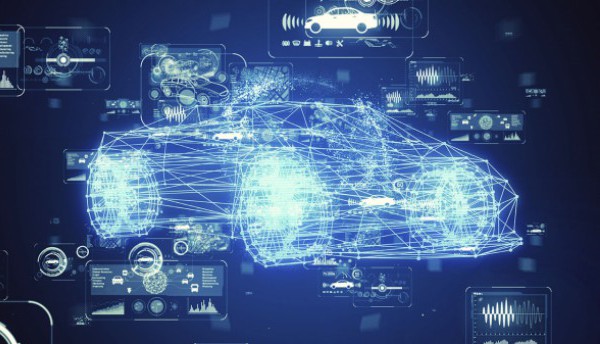
Q&A with Ansys
A digital twin (DT) is a virtual replica of a physical asset that uses real-world data and models to improve operations and aid in decision-making. It incorporates real-time and historical data, as well as engineering, simulation and machine learning models. By creating a digital twin, the automotive industry can gain insights into the performance and behavior of physical assets, optimize operations and make more informed decisions.
The use of DTs in the automotive industry is expected to become more widespread as the digitization of vehicles continues to advance. DTs have the potential to enhance product design, manufacturing processes and vehicle maintenance, resulting in improved products and a more efficient and reliable automotive industry. As this evolution continues, a key priority will be ensuring functional safety and cybersecurity across various automotive processes. By addressing these requirements, the industry can fully leverage the benefits of DTs while maintaining the highest standards of safety and security.
To delve deeper, S&P Global Mobility initiated discussions with leading players in the DT market, including IBM, Ansys, ABB, rFpro, Digiflec and PTC. All are at the forefront of driving architectural shifts and pushing back the technical boundaries. Representatives of each company share their thoughts on the evolving landscape of DTs.
To learn more about how Ansys is developing DTs, we spoke to Sameer Kher, senior director, research and development, digital twins at Ansys. Ansys’ DT capabilities include model creation, simulation and analysis, data integration, predictive maintenance, performance optimization and decision support.

The following is an edited transcript of the conversation.
S&P Global Mobility: What are the most promising automotive use cases for digital twins?
Sameer Kher: In general, use cases that involve engineered equipment that is significantly expensive to build or maintain, are good applications for digital twins. In automotive, electric vehicle batteries, EV or hybrid powertrains, motors for large commercial vehicles, are all good applications to build digital twins for.
What are the requirements for an original equipment manufacturer to effectively implement DT technology?
In order to implement DT, OEMs need to invest in appropriate infrastructure. Specifically, things like sensors, compute can communication infrastructure and storage infrastructure. Once this is in place, digital twin software (such as the software from Ansys) can be deployed to generate the insights that are necessary.
What are the primary challenges associated with implementing DT technology?
There are two key challenges. Firstly, costs associated with the infrastructure — this is typically capital intensive and slow to roll out. This also yields limited direct value short term (without the full DT deployment). Secondly, heterogeneity of data and communication formats across suppliers and OEMs — standardization efforts such as at COVESA or DTC will help with this.
How is the pricing structure for the DT scenario determined? Is it based on the complexity of the scenario, the size of the data, or the accuracy of the synthetic data (including the number of sensors used)?
The value that DTs provide varies widely depending on the use case. For example, a battery supplier may only be interested in managing warranty and replacement costs, while an OEM may be interested in providing digital capabilities to maximize range to their commercial customers. I suspect pricing will depend on value provided by the DT. Monetization will be via subscription or similar approach.
What is considered the new standard for vehicle development time, starting from the design freeze phase to production?
This varies significantly from company to company and generation to generation. Increasing adoption of technologies like digital twin and simulation helps customer shrink these times. For example, newer EV- focused companies that use modern simulation and digital twin technologies have development cycles in the 20-30 month range while more traditional companies are in the 50-month range.
Is DT technology primarily used in the infotainment and advanced driver assistance systems (ADAS) domains within the automotive industry? Or are there significant advancements expected in other domains like powertrain, chassis and body?
ADAS, powertrain, body and battery are all great use cases.
How does the sustainability of digital twins compare to traditional physical development in terms of CO2 emissions? What measures are taken to minimize the carbon footprint of digital twin technology?
First, it is important to recognize the sustainability benefits of digital twins. By studying the digital twin under actual working conditions, companies can see the product in action, over time, when subjected to the physical environment, without requiring wasteful physical prototypes. Even more importantly, digital twins enable true predictive maintenance. Instead of over-servicing or over-maintaining all type of machinery, companies can act “just in time” to address any product performance issues. They can accurately visualize exactly when and where maintenance is needed, instead of over-engineering.
Of course, the additional compute necessary to create and deploy digital twins needs to be managed. At Ansys, we focus on ensuring that the software we create makes the best use of available compute resources. Our DT software generates runtimes that are lightweight and compact, can be deployed easily on edge devices and minimize the need for expensive compute on the cloud.
How will OEMs and suppliers ensure brand differentiation and maintain brand equity in a market where digital twins may lead to more homogeneous vehicles?
If we look at other industries (like consumer electronics), we can see a more advanced version of DT adoption in action. Brand differentiation is still strong and driven by the types of software and hardware features that are available and enabled for users. Overall, we expect DT adoption will improve the quality and capability of products while reducing downtime and other waste.
What proportion of the design, testing and validation processes rely on digital twin models compared to physical prototypes?
This varies widely across companies — but one thing is for sure. The proportion of digital twin models to physical prototypes is definitely increasing rapidly.
What are the key aspects of digital twins that everyone in the auto industry should be aware of? Also, what cautionary advice would you give to those who are hesitant to embrace digital twins?
Most organizations start with the assumption that a predictive digital twin can be built using data and data-based models alone. In reality, domain knowledge, clean data and more importantly failure mode data are all critical to building meaningful digital twins. Using a combination of simulation-based models, which incorporate physics and domain knowledge, and AI/ML models machine learning, which incorporate data and allow the model to evolve, lead to the most effective digital twins.